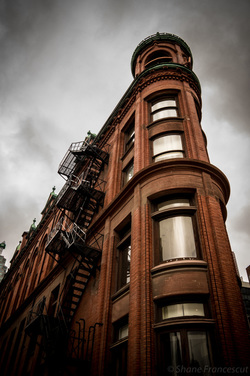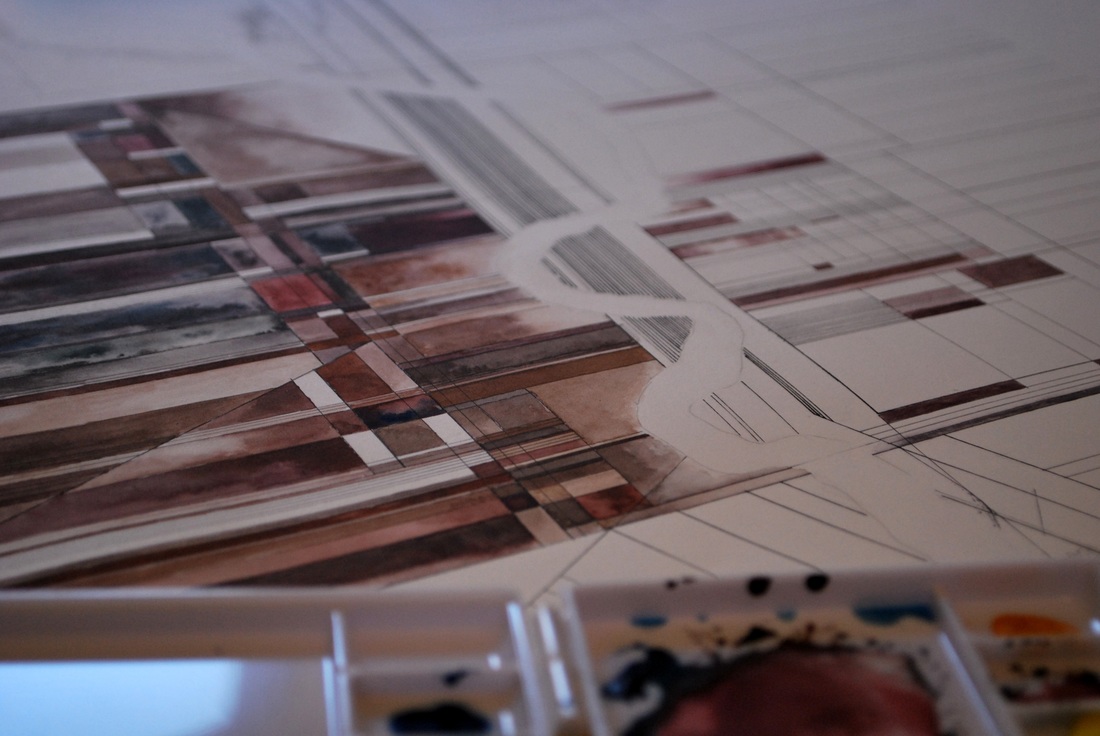 The red-brick Gooderham Building is a historic landmark of Toronto, located at 49 Wellington Street East. The red-brick Gooderham Building is a historic landmark of Toronto, located at 49 Wellington Street East. In Chris Bateman's A brief history of the Don Valley Brick Works , layers of the Toronto Brick Works, Don Valley Bricks, are unveiled. What has always resonated with me, is the fabric of Toronto... If right now you're sitting in a building built before the second world war, there's a chance the walls came from the Don Valley. Inspired by the process, layers of time and extreme temperatures have formed our landscape. Tracing back the origins of our built form, the importance of the late 19th century discovery by Taylor is at the heart of our 20th century city. According to C.Sauriol (1981), the origin of the Brickworks can be traced to the year 1882. During the spring of that year, William Taylor and an assistant were at work erecting a fence in the valley of the Don River. Clay being brought to the surface as postholes were being dug caught the attention of Taylor, who became curious as to its potential for brickmaking.The following day, Taylor packed two cigar boxes with the clay and took them to a local brickworks for firing. Here, Sauriol stated, a discussion took place between Taylor and the owner of the brickworks as to the colour of bricks which would be produced by firing. Taylor maintained that red bricks would result while theowner suggested that yellow ones would be produced. The clay did in fact produce very fine quality red-coloured bricks. Further testing on the site convinced Taylor and his brothers to establish a brickworks. A full historical account of the company's development and impact on the city is on the Evergreen website.
0 Comments
 "Whoever wishes to foresee the future must consult the past; for human events ever resemble those of preceding times. This arises from the fact that they are produced by men who ever have been, and ever shall be, animated by the same passions, and thus they necessarily have the same results." Machiavelli The latest paintings, influenced by 1820-1960 maps of the Lower Don River, Toronto as well as the harbour, will explore the water content. We know Toronto to have been greatly influenced architecturally by industrial establishments which were inevitably creating industrial waste. In the 1860s and 70s, widespread adoption of stream power stimulated industrial expansion across the city. The existence of a growing industrial hub on the Lower Don, with its established benefits of affordable land and convenient rail and shipping access, provided the foundation for further industrial growth. (Making an Industrial Margin J Bonnell) Many factors contributed to physical changes in the Don Valley and marshlands; deforestation, soil erosion, water diversion for agricultural and industrial purposes. The years of waste and sewage disposal in the Don River and Lake Ontario included, and were not limited to CATTLE BYRES LIQUIDIZED CATTLE MANURE ANIMAL CARCASSES LIME FROM TANNING OPERATIONS CORROSIVE LYE FROM SOAPWORKS INDUSTRIAL BY-PRODUCTS SUCH AS GASOLINE ORGANIC WASTES SUCH AS ANIMAL OFFAL SEWAGE DISPOSAL BREWERY DISCHARGES WASTES FROM RENDERING PLANTS Now that spring has arrived, I can bring my books outdoors and enjoy beautiful natural light. I would like to take the opportunity, through my blog, to comment on what I've been reading.
This should help me remember what I've read, force me to think about how the content of my research is, which is endlessly influencing my art, and share it. It should also help me read books which are pertinent to my interests and focus my attention. Here are a few of which are on my list, and some that I have been reading over and over already. HTO: Toronto's Water from Lake Iroquois to Lost Rivers to Low-flow toilets, by Wayne Reeves,Christina Palassio. Reclaiming the Don: An Environmental History of Toronto's Don River Valley, by Jennifer L. Bonnell. In the Skin of a Lion, by Michael Ondaatje Eau Canada: The Future of Canada's Water, published by Karen Bakker. Tales of the Don, by Charles Sauriol. As well as Remembering the Don: A Rare Record of Earlier Times Within the Don River Valley. |
about the authorThe blog connects thoughts on Landscape and Architecture, design, and mostly the connections between landscape architecture, art and our beautiful Toronto. archives
February 2022
|






